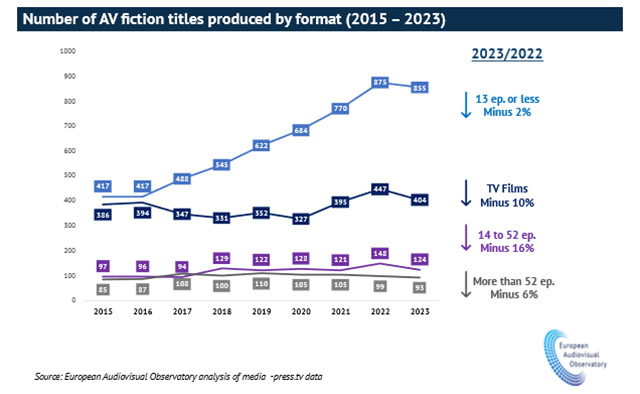World
Europe’s 35 smartest countries reveal and the UK isn’t in the top 5 – full list

The top 35 countries home to the most educated people in Europe have been revealed, which looks at the adult population with tertiary education, specifically between the ages of 25 and 74.
However, it varies considerably across the continent. On average, almost one-third of people aged 25-74 in the European Union have a higher education degree, including public and private universities, colleges, technical training institutes and vocational schools.
The available data also produced a variety of levels depending on age and gender, said Euronews.
Educational levels are defined as low (less than high school), middle (high school) or high (university studies).
In 2022, 31.8 percent of people aged 25-74 years in the EU had a higher educational attainment. This ranged from the lowest of 17.4 percent in Romania to the highest of 49.8 percent in Ireland.
Overall, the share of higher education graduates was higher than the EU average in the Nordic and Baltic countries, including Sweden and Norway, which ranked third and fourth respectively with over 45 percent of tertiary education graduates.
In the UK, 43.5 percent of the population aged between 25 and 74 had a higher education degree, significantly higher than the EU’s “Big Four” countries which included France (38.2 percent) and Spain (38 percent). The UK scored particularly highly on the level of middle education, at 36.6 percent, behind North Macedonia and Montenegro at 47. And 60.6 percent respectively.
Italy, with the lowest share of tertiary graduates after Romania at 18.5 percent, was significantly below the EU average in Germany, at 31.5 percent.
The share of the population with higher education was significantly lower in the EU candidate countries. For example, Turkey had the highest share of the population with low education by far, with two-thirds – 61.8 percent – having less than upper secondary education attainment. 20.6 percent had a higher education degree.
The share of vocational education – classified as medium educational attainment – was considerably high in several countries, including in nine EU countries such as Czechia, Poland and Germany, scoring 63.9, 52.2 and 47.4 percent respectively.
Interestingly, the share of university graduates increases significantly among the younger population of Europe, particularly the ages of 25-34 years. In 2022, 42 percent of the EU population in this age group had a higher educational degree. Again, the highest scorer was Ireland with 62.3 percent, while Romania scored just 24.7 percent.
However, when compared with the population of 25-74, the Nordic countries of Finland and Iceland had a significantly lower share of tertiary education than the EU average.
This figure was above 50 percent in one-third of EU countries, but ten were behind the EU’s 45 percent target by 2030.
In the 35 countries where data is available, women aged 25-354 had a higher proportion of tertiary education attainment than men. The average proportion in 2022 was 47.6 percent, whereas it was just 35.6 percent for men.
In Cyprus, 67.1 percent of the 25-34 age group had tertiary education, compared with 50.7 percent of men. In Iceland, 53.7 percent of women compared with just 28.3 percent of men. Finally, in the UK, 52.8 percent of women had tertiary education, compared with 45.9 percent of men.
Overall, the gender age gap was significantly higher in favour of women in Nordic and Baltic countries, bar Finland. Iceland, Slovenia and Slovakia recorded the highest difference, with 25.4, 23.8 and 22.8 percentage points (pp) respectively. Turkey (1.3pp), Switzerland (3.6pp) and Germany (4.6pp) reported the smallest gap, meaning the shares between men and women.
In the EU, the share of people aged 25-74 with tertiary education has been growing consistently, from just 19.1 percent in 2004 to 31.8 percent in 2022.
Finally, “lifelong learning” – or adult learning – was analysed. According to Eurostat, it includes all purposeful learning activities, whether formal, non-formal or informal. In 2022, the share of people aged 25-64 in the EU who participated in such training in the previous four weeks was 11.9 percent, ranging from only 1.7 percent in Bulgaria to 36.2 percent in Sweden.
The Balkan countries had significantly lower shares compared to the EU average, contrasted with a high proportion in Nordic countries.
Full list of countries with high – or tertiary level – education:
36. Romania – 17.4
35. Italy – 18.5
34. Turkey – 20.6
33. N. Macedonia – 22.1
32. Serbia – 23.4
31. Croatia – 23.8
20. Czechia – 24.1
29. Montenegro – 24.6
28. Slovakia – 27.1
27. Bulgaria – 27.8
26. Hungary – 27.8
25. Malta – 28.1
24. Portugal – 28.4
23. Poland – 30.3
22. Germany – 31.5
21. EU – 31.8
20. Greece – 32.4
19. Austria – 33.4
18. Slovenia – 36.6
17. Latvia – 37.4
16. Spain – 38
15. France – 38.2
14. Denmark – 39.9
13. Finland – 40.2
12. Iceland – 40.6
11. Estonia – 41.1
10. Netherlands – 41.4
9. Switzerland – 42.4
8. Belgium – 42.8
7. UK – 43.5
6. Lithuania – 44
5. Cyprus – 44.9
4. Norway – 45.1
3. Sweden – 46
2. Luxembourg – 49.5
1. Ireland – 49.8










